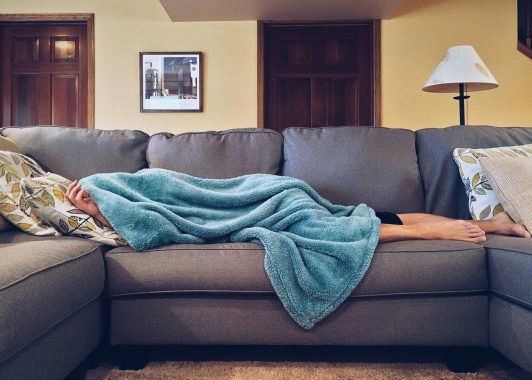National Napping Day: How long should you sleep to feel refreshed?

National Napping Day, observed annually on the Monday following the switch to daylight saving time in the United States, falls today, March 10, 2025.
Established in 1999 by Boston University professor William Anthony and his wife, Camille, the day was created to highlight the benefits of napping, particularly as people struggle to adjust to the lost hour of sleep caused by the time change.
Though it began as an awareness campaign about the importance of sleep, the day has since evolved into a broader celebration of rest, encouraging people worldwide to embrace napping as a legitimate tool for boosting health and productivity.
Historically, many cultures have long recognised the value of short daytime sleep, with siestas being a common tradition in Spain and Latin American countries, while in Japan, “inemuri,” or napping at work, is considered a sign of dedication rather than laziness. Even great historical figures, including Winston Churchill, Leonardo da Vinci, and Albert Einstein, were known for their strategic napping habits, using brief periods of sleep to enhance their mental clarity and creativity.
Despite the stigma surrounding naps in some modern workplaces, science has repeatedly shown that sleep is an active process in which the brain consolidates memories, processes emotions, and rejuvenates the body. The question remains, however: how long should one nap to wake up feeling refreshed rather than groggy? The answer lies in understanding the different sleep stages and how they impact cognitive function, mood, and physical health.
The power nap
The shortest and most efficient form of daytime sleep is the power nap, typically lasting between ten and twenty minutes. These brief naps are highly effective because they allow the brain to enter the initial stage of sleep, where relaxation occurs, but they prevent it from slipping into deeper stages that could cause grogginess upon waking.
According to 2022 research by Harvard Medical School, a twenty-minute nap can increase alertness by up to 54% and improve task performance by 34%, making it a preferred option for pilots, astronauts, and high-functioning professionals who need to stay sharp.
Power naps are also beneficial for reducing stress and lowering levels of the hormone cortisol, which is associated with anxiety and fatigue. Research has further indicated that even ultra-short naps, such as nanonaps (lasting just a few seconds) or micronaps (lasting one to two minutes), can momentarily improve focus and attention. However, these are not sustainable substitutes for proper sleep and should be used sparingly.
The thirty-minute nap
A nap lasting around thirty minutes is often considered a tricky option, as it can leave individuals feeling more fatigued than before they napped. This happens because, around the twenty-five to thirty-minute mark, the body begins transitioning from light sleep into slow-wave sleep, a deeper stage in which brain activity slows significantly. If a person wakes up at this point, they are likely to experience sleep inertia, the grogginess and disorientation that occur when the body is abruptly pulled out of deeper sleep.

Despite the risk of sluggishness, thirty-minute naps can still be beneficial when planned strategically. Research suggests that naps in this range can improve memory retention by almost fivefold, particularly for individuals engaged in complex learning tasks. Moreover, some sleep experts recommend a thirty-minute nap as a compromise for those who cannot afford to sleep longer but still need some degree of mental and physical rejuvenation.
The sixty-minute nap
A sixty-minute nap allows the brain to enter slow-wave sleep, which plays a crucial role in consolidating memories and processing newly acquired information. Studies have found that napping for an hour can enhance fact-based learning and problem-solving abilities, making it an excellent option for students or professionals who need to absorb and retain large amounts of data.
However, the major drawback of a sixty-minute nap is that waking up during slow-wave sleep can cause significant sleep inertia, often resulting in confusion, sluggishness, and an overwhelming desire to return to sleep. This is why those who take hour-long naps often require additional time to fully regain alertness, unlike those who opt for shorter or full-cycle naps.
The ninety-minute nap
For those seeking the most comprehensive benefits, a ninety-minute nap is the best option, as it allows the body to complete an entire sleep cycle, moving from light sleep to deep sleep and finishing with REM (rapid eye movement) sleep. REM sleep is the phase where dreaming occurs and where the brain processes emotions, creativity, and problem-solving tasks. Studies have shown that ninety-minute naps can enhance creativity, boost emotional resilience, and improve overall cognitive performance.
Unlike shorter naps that risk sleep inertia, waking up after a full sleep cycle enables individuals to feel completely refreshed and energised. This explains why many elite athletes and high-performance professionals incorporate ninety-minute naps into their schedules, treating them as an essential part of their recovery and performance optimisation.

Interestingly, the concept of polyphasic sleep, where individuals take multiple short naps instead of one long sleep period at night, has been practiced by notable figures such as Nikola Tesla and Thomas Edison. The Uberman sleep schedule, a more extreme version, involves taking six twenty-minute naps throughout the day, eliminating the need for traditional nighttime sleep. However, this approach is unsustainable for most people and can lead to severe sleep deprivation if not managed correctly.
Impact on health and productivity
Beyond its immediate effects on alertness and cognitive function, napping also has long-term benefits for overall health. Studies have linked regular napping to reduced risks of heart disease, improved immune function, and lower blood pressure. In Mediterranean cultures where siestas are common, research has found lower rates of cardiovascular disease compared to regions where napping is not widely practiced.
Moreover, sleep researchers have found that napping can help counteract the cognitive decline associated with ageing, making it a valuable tool for maintaining brain health over time.
Even for those who do not suffer from sleep deprivation, a well-timed nap can enhance emotional stability and make it easier to manage stress, which is why some progressive companies, including Google and Nike, have introduced nap pods in their offices to encourage midday rest.
Choosing the right nap length
Understanding the science behind napping is crucial for making the most of daytime sleep. While a quick power nap can provide an instant boost in energy, a longer nap may be required for memory retention or creative problem-solving. However, the key to a truly refreshing nap is timing—waking up at the right stage of sleep determines whether a nap leaves one feeling revitalised or disoriented.














